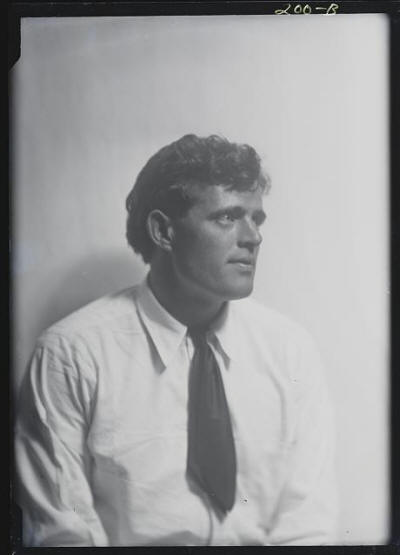Queer
Places:
Jack London State Historic Park, 2400 London Ranch Rd, Glen Ellen, CA 95442
 John
Griffith London (born John Griffith Chaney;
January 12, 1876 – November 22, 1916)[2][3]
was an American novelist, journalist, and social activist. A pioneer in the
world of commercial magazine fiction, he was one of the first writers to
become a worldwide celebrity and earn a large fortune from writing. He was
also an innovator in the genre that would later become known as
science fiction.[6]
John
Griffith London (born John Griffith Chaney;
January 12, 1876 – November 22, 1916)[2][3]
was an American novelist, journalist, and social activist. A pioneer in the
world of commercial magazine fiction, he was one of the first writers to
become a worldwide celebrity and earn a large fortune from writing. He was
also an innovator in the genre that would later become known as
science fiction.[6]
His most famous works include
The Call of the Wild and
White
Fang, both set in the
Klondike Gold Rush, as well as the short stories "To
Build a Fire", "An Odyssey of the North", and "Love of Life". He also
wrote about the South Pacific in stories such as "The Pearls of Parlay" and "The
Heathen", and of the San Francisco Bay area in
The Sea Wolf.
London was part of the radical literary group "The Crowd" in San Francisco
and a passionate advocate of unionization,
socialism,
and the rights of workers. He wrote several powerful works dealing with these
topics, such as his
dystopian novel
The Iron Heel, his non-fiction exposé
The People of the Abyss, and The War of the Classes.
Andrew Sinclair, author of "Jack: A Biography of Jack London" (1977), reports in his biography that London may have engaged in a
homosexual relationship while in prison for vagrancy. In
addition, one of the great loves of London's life was the bohemian poet
George
Sterling.
London referred to Sterling as "Greek" and was called "Wolf" in return. "He
remained a woman's man and never seems to have slept voluntarily with men."
A letter Sinclair cites from London to
Maurice Magnus on the
subject of homosexuality, however, seems to me to be less definitive, more coy
and self-contradictory than it does to Sinclair. The problem of homoeroticism and the relationship between Sterling
and London was framed in Joan London's 1939 biography. She concludes that "both would have furiously resented
and denied the inferences that would be readily drawn today," but it was
probable that their relationship did contain "some latent homosexuality."

by
Arnold Genthe
London died November 22, 1916, in a sleeping porch in a cottage on his
ranch. London had been a robust man but had suffered several serious
illnesses, including scurvy in the Klondike.[52]
Additionally, during travels on the Snark, he and his wife Charmian
picked up unspecified tropical infections, and diseases, including yaws.[53]
At the time of his death, he suffered from dysentery, late-stage alcoholism,
and uremia;[54]
he was in extreme pain and taking morphine.
London's ashes were buried on his property not far from the Wolf House.
London's funeral took place on November 26, 1916, attended only by close
friends, relatives, and workers of the property. In accordance with his
wishes, he was cremated and buried next to some pioneer children, under a rock
that belonged to the Wolf House. After Charmian's death in 1955, she was also
cremated and then buried with her husband in the same simple spot that her
husband chose. The grave is marked by a mossy boulder. The buildings and
property were later preserved as Jack London State Historic Park, in Glen
Ellen, California.
My published books:


BACK TO HOME PAGE

- https://en.wikipedia.org/wiki/Jack_London/li>
- Rereading Jack London
by Leonard Cassuto, Jeanne Campbell Reesman
Stanford University Press, 1998 - Literary Criticism - 287 pages
 John
Griffith London (born John Griffith Chaney;[1]
January 12, 1876 – November 22, 1916)[2][3][4][5]
was an American novelist, journalist, and social activist. A pioneer in the
world of commercial magazine fiction, he was one of the first writers to
become a worldwide celebrity and earn a large fortune from writing. He was
also an innovator in the genre that would later become known as
science fiction.[6]
John
Griffith London (born John Griffith Chaney;[1]
January 12, 1876 – November 22, 1916)[2][3][4][5]
was an American novelist, journalist, and social activist. A pioneer in the
world of commercial magazine fiction, he was one of the first writers to
become a worldwide celebrity and earn a large fortune from writing. He was
also an innovator in the genre that would later become known as
science fiction.[6]


